A whole palette in the garden in one variety - the De Barao tomato and the secrets of growing it
To choose from varieties for planting in the garden, such characteristics of tomatoes as resistance to the climate in which they will grow, soil tolerance, features of plant care, and the taste of the variety influence. Every gardener has his favorite varieties. One of the most popular was the De Barao variety.
Let's look at the characteristics and description of the De Barao tomato variety.
Description of the variety
Variety varieties
De Barao is a Dutch tomato variety that combines a number of subspecies that differ from each other in color, shape and taste of the fruit. General features of the variety varieties: the plants are tall, reaching 3 m in height, resistant to low temperatures, shade-tolerant, have good immunity to diseases and produce a rich harvest.
The photo below shows the varieties:
- Pink. The fruits are oval, elongated, with a tail at the end. The color of the fruit is red-pink.
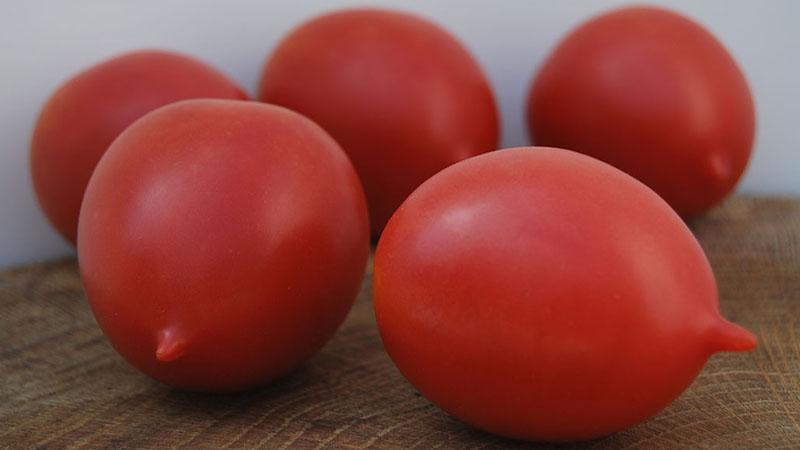
- Black. This subspecies differs from others only in the color of the fruit. They are dark purple-red in color and usually lack a tail at the end.
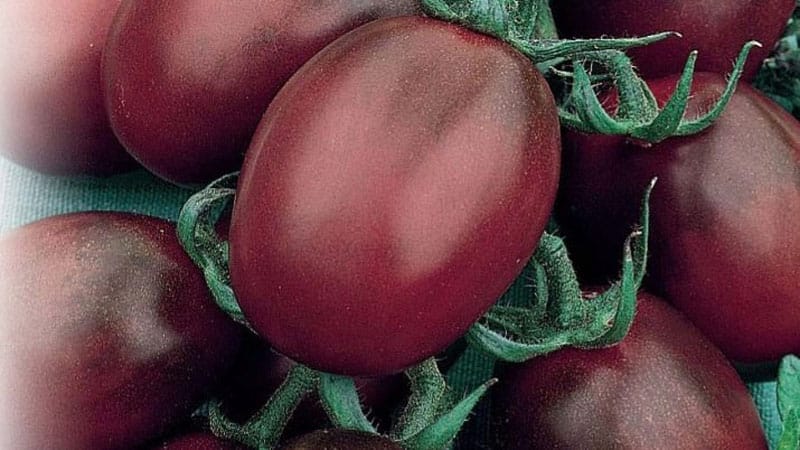
- Red. The variety has bright red elongated fruits, the taste of the pulp is classic tomato.
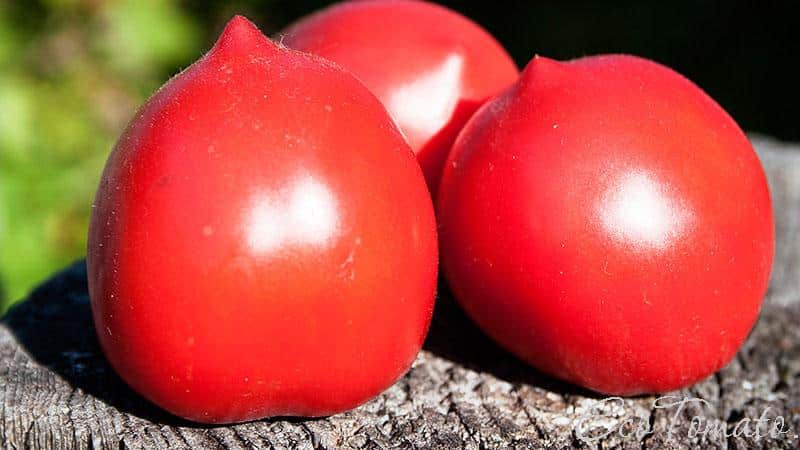
- Tsarsky. The most productive variety of the variety is usually harvested 15-20 kg from one bush. The color of the fruit is red, oval in shape, with a protrusion at the end.
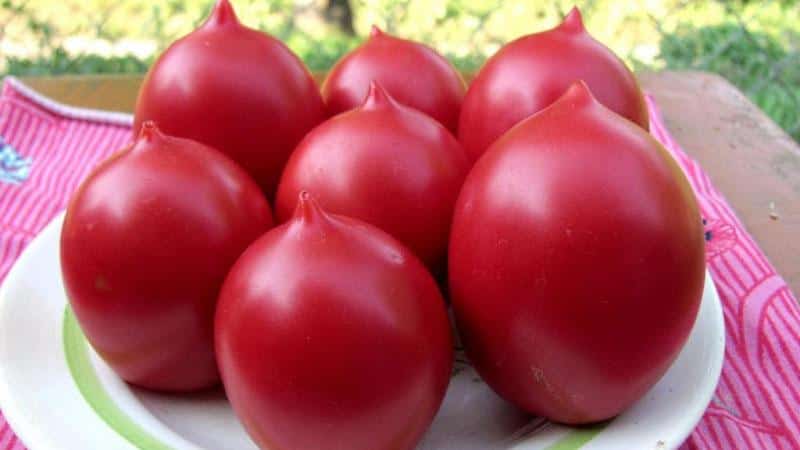
- Giant. The fruits are the largest, reaching a weight of 150 g. The color and shape are classic for this variety.
- Gold. Tomatoes have wonderful taste and are golden in color.
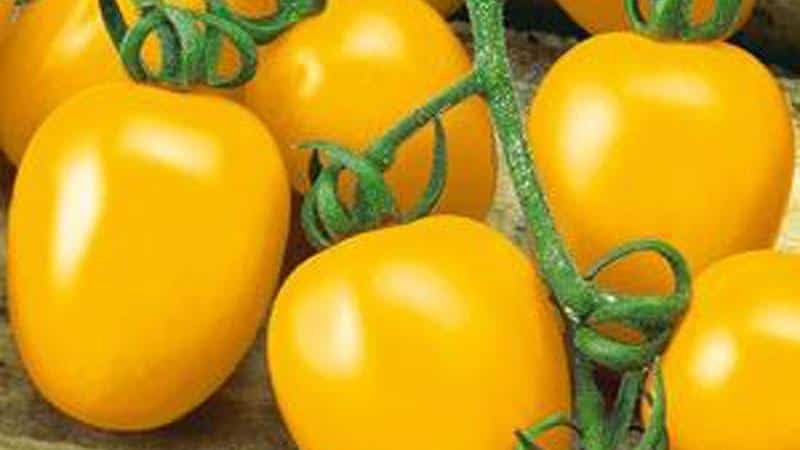
- Orange. The fruits are oval-shaped and orange in color.
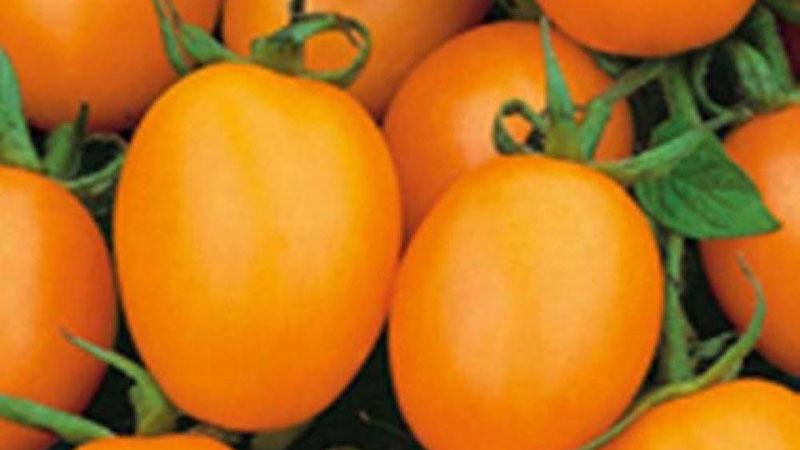
- Striped. Striped, red-brown, oval-shaped fruits are perfect for canning.
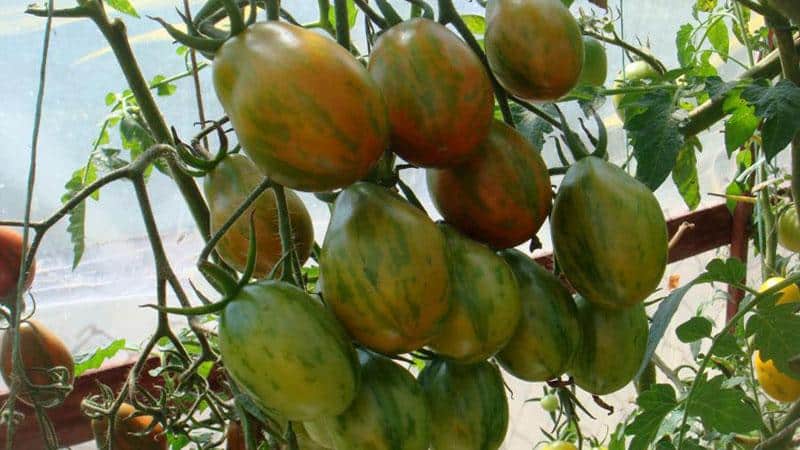
Distinctive features of the variety
Bushes of the De Barao variety are tall, reaching a height of 3 m, sometimes 4-5 m. Tomatoes are grown both in a greenhouse and in open ground. The variety is medium late, the fruits ripen only 115-120 days after sowing the seeds in the soil.
Since the variety is tall, pinching and tying are required. Side shoots are constantly forming, so watch for their appearance and trim them in time. Support or tie the stem to the greenhouse structures.
The leaves are dark green, velvety, medium in size. The flowers are small and yellow. Inflorescences are formed after the appearance of 9-11 leaves.
Reference. Gardeners call frost resistance and shade tolerance the distinctive features of the De Barao variety.
Fruit characteristics and yield
The tomatoes grow tasty, sweet with a slight sourness. The weight of the fruit reaches 40-90 g depending on the variety. The yield is 8-12 kg per 1 sq. m depending on the variety and care taken.
The dense pulp allows the fruits to maintain their shape and presentation during storage and transportation. This variety is excellent for industrial cultivation.
How to grow seedlings
Properly grown seedlings are the basis for future productivity. Therefore, let's look at this process in more detail.
Seed preparation
We recommend buying ready-made seeds for planting, since preparing them yourself is a labor-intensive process. Some seeds are disinfected in advance and treated with growth enhancers (such seeds are distinguished by their colored shell).
Attention! If the seeds have not been prepared, do it yourself.
Take a bandage and cut it into strips (up to 20 cm). Place the seeds in the middle and roll the bandage into a tube. Fill the prepared parcels with the solution potassium permanganate for 15 minutes. Then remove the bundles, rinse under running water and place in a solution to stimulate growth. Next, follow the instructions for the growth stimulator.
After removing from the stimulator, place the bandages with seeds in plain water and place in a warm place for 48 hours. Make sure the bandages do not dry out. Then place the seeds in the refrigerator at a temperature of +3-5 ° C for 12 hours. This is necessary to harden them.
After the preparatory steps, proceed to sowing.
Container and soil
To plant seeds, first prepare a seedling box and soil. The soil is sold in the store. To prepare it yourself, mix earth and humus in equal parts, add 30 g of superphosphate and a glass of ash.
Place film on the bottom of the box, make holes in the film to allow excess water to drain through. Place river sand and gravel on the film as drainage. Pour soil on top so that there is at least 2 cm left to the top edge of the container.
Before placing the soil in a box, water it with a solution of potassium permanganate and leave it indoors for 2 days. The soil for sowing should be moist and loose.
Sowing
It is recommended to sow the De Barao variety in early March. Plant the seeds in boxes with soil at a distance of 1-3 cm from each other. After sowing, cover them with soil and cover with film, transfer the boxes to a warm place.
After the seeds germinate, remove the film.If the sprouts have sprouted close to each other, make a pick, that is, transplant the sprouts into separate containers, for example, cups. This is done when the first 2-3 main leaves appear. If the planting is not dense, you can plant it when 5-6 leaves appear.
The soil should be moist, but not waterlogged. Water grown seedlings at the root using a spray bottle.
How to grow tomatoes
Seedling
Until the seeds germinate, maintain the temperature in the room with the boxes at 20-25 °C. When the seeds germinate, it is recommended to lower the temperature to 15 °C, and at night - to 10 °C.
Important! Ventilate the seedlings regularly and carefully ensure that the sprouts do not freeze.
Water the sprouted seedlings with warm, settled water. For watering, use a sprayer. As soon as the first 5-6 leaves appear, water every 3-4 days. Keep the boxes with seedlings in a sunny place.
If there is not enough sun, feed the seedlings with a weak solution of potassium fertilizers. Also, every two weeks, apply fertilizer with a superphosphate solution (20 g per 10 liters of water).
Landing
If you sowed the seeds in early March, you can plant seedlings as early as early June. By this time, the bushes will have reached a height of approximately 50 cm. From May to June, sometimes take the seedlings out of the room and place them in partial shade so that the plant gets used to the environment.
Prepare the soil for planting in advance, preferably in the fall. Add humus and wood ash to the soil and dig it up. The exact time of planting depends on the climate of the region, but the temperature at night should not fall below 10 ° C, otherwise the plant will freeze and die. In case of sudden frosts, prepare additional shelters, for example, film.
Since the De Barao tomato grows tall, leave a distance between bushes of 80-100 cm, and between rows - up to 120 cm. It is better to plant seedlings in a permanent place in the evening. Dig holes at the planting site and thoroughly loosen the soil around the hole.
Fill the hole with water, let it soak in and place the seedling there along with the soil in which it grew. Dig the plant up to the first leaves with soil.
Care
De Barao requires a large amount of water - about 1 bucket for each bush. Water for the first time a week after planting, using water heated in the sun. Thereafter, water every 2-4 days. To help the roots breathe, do not forget to loosen the soil around the stems after each watering.
Note. During the fruiting period, feed the De Barao variety with an aqueous solution of mullein or chicken droppings. To prepare the solution, dilute manure or droppings to a liquid state and leave for 3 days. Then dilute the resulting slurry with water: the slurry is diluted in a ratio of 1:10, the infusion of manure is diluted in a ratio of 1:20. During the season, carry out 3 feedings with an interval of 10-12 days.
Bushes of the De Barao variety form 2-3 stems. This means leaving 2-3 main stems and cutting off the rest. This process is called stepsoning. Stepsoning for this variety is a mandatory procedure; it should be done every 4-5 days, otherwise all the nutrients and energy will be spent on the growth of stepsons, not fruits.
Remove the shoots when they reach a length of 5 cm, leaving a stump 1 cm long. It is better to carry out pinching in the morning so that the cutting dries out during the day.
Plant bushes require support or tying to the greenhouse floors.
Diseases and pests
The most dangerous disease for tomatoes is late blight.
The De Barao variety is resistant to this disease, but in unfavorable weather conditions, prevention still requires spraying the bushes with a garlic solution or commercial preparations.
Tomatoes suffer from fungal diseases such as white spot and gray rot. If affected by these diseases, immediately cut off the affected parts and burn them. Then treat the plant with chemicals against diseases.
From pests On tomatoes there are whiteflies, slugs, spider mites, mole crickets, and wireworms. For mole crickets and wireworms, a special poisonous bait is placed between the rows. In other cases, if the fruits have not yet set, the plants are treated with special pest control agents.
Attention! If the fruits are already approaching and it is impossible to spray with toxic substances, it is recommended to use ash. It is sprayed onto the plant itself or at the root.
The nuances of growing in open ground and in a greenhouse
The De Barao variety is grown both in greenhouses and in open ground. In the greenhouse you will get a richer harvest, but the height of the greenhouse should be more than 3 meters, since the tomatoes are very tall.
Before planting in open ground, make 20 cm high fences around the beds. It is more correct to plant seedlings in open ground in a checkerboard pattern on an area of 50x50 cm.
Add humus and 1 spoon of superphosphate to each hole. Insert a pole with a diameter of 30-40 mm into each hole. For stability in windy weather, it is recommended to tie the poles together with twine.
Important! To prevent the first ovaries from falling off on planted tomatoes, 4-5 days before planting in the ground, spray them with a boric solution (1 g of boric acid per 1 liter of water).
Harvesting and application
The De Barao variety is classified as mid-season in terms of fruit ripening. In our climate, these tomatoes do not have time to ripen until the end of summer, so they are picked green and left to ripen. These green and white tomatoes are stored for a long time, and when ripe, they are used for canning and pickling.
If tomatoes have time to ripen on the bush, they are eaten fresh, added to salads, and prepared as juices or pastes. Gardeners often grow several subspecies of a variety with different colors. A salad made from multi-colored tomatoes looks impressive, and multi-colored tomatoes in jars look just as beautiful.
Advantages and disadvantages of the variety
The main advantages of the De Barao variety include:
- the fruits are universal and suitable for all types of culinary processing;
- a bountiful harvest;
- disease resistance, frost resistance;
- attractive appearance of the fruit, excellent taste.
Disadvantages of the variety:
- to get a large harvest, it is better to grow tomatoes in a greenhouse or greenhouse;
- not all varieties of the variety are suitable for preservation;
- does not get along well next to other varieties of tomatoes;
- requires a lot of space for planting;
- The variety requires careful care.
Farmer reviews
Astra, Pyatigorsk: “De Barao are excellent tomatoes; we didn’t have to treat late blight. To get a good harvest, you need to sow early and plant in a greenhouse. Personally, I sowed in February, but by the time of planting my tomatoes had outgrown, I had to cut off 15 cm from the top. I put these cut sprouts in water, when they took root, I planted them in pots again. If they are planted, the clusters are laid almost from the ground itself. I plant this surplus outside, and the rest in the greenhouse. It’s also important to fertilize the soil well before planting.”
Olga, Saransk: «I have been growing it in a greenhouse for many years and it has never let me down.An old, proven variety. Some years he only gets sick. You can can it, you can just eat it. Early enough. In terms of stability, of course, they are inferior to hybrids. But I don’t need giant harvests on my plot. We have enough."
Marina, Yaroslavl region: «This year I grew De Barao black and De Barao giant. I really liked the first one and will continue to plant it in the new season. A productive variety, the fruits are smooth, dense, good for canning. They store well too – we still eat them. The taste, however, is somewhat different from red - less “tomatoy”. But in the greenhouse these tomatoes continued to grow until mid-October.
But the Giant did not inspire. The fruits are large, of course, fleshy, of good taste. But he turned out to be somewhat slow-witted. The fruits take a long time to set and grow slowly. There are few of them on the plant. In general, I tried it, and I won’t do it again. But I decided to plant a simple De Barao and a golden De Barao«.
Conclusion
Variety de Barao is for those gardeners who are not afraid of work and love to experiment.
The variety has many varieties. By planting everything, you will get a varied harvest in both taste and color. Not a single subspecies will leave you indifferent or disappoint. If you follow the rules of planting and growing, the result will be excellent, but it should be noted that it is better to grow this variety in a greenhouse.